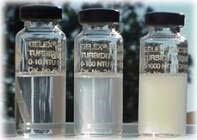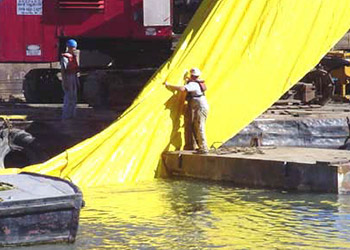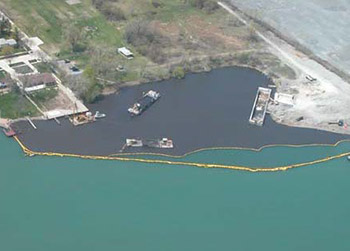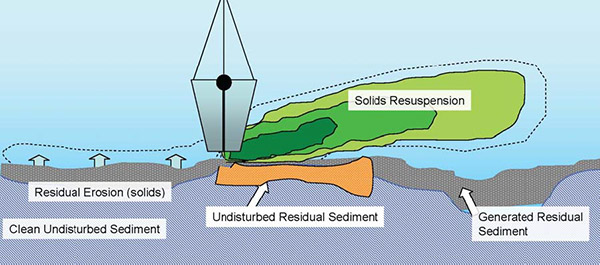Turbidity Monitoring
Water quality monitoring includes collecting and reviewing real-time turbidity data.

Turbidity is a measurement of water clarity. It is measured by quantifying the amount of light reflected by suspended and colloidal particles.
Turbidity is a natural occurrence in all water bodies. In addition to dredging, elevated readings can be caused by boat traffic, storms, urban runoff, sewer discharges, excessive algal growth, and bottom feeders (such as carp) stirring up bottom sediments.
Turbidity is measured both upstream (opposite of the water flow) and downstream (in the direction of the water flow) of the dredging operation. The difference between these two points provides a measure of the impact of the dredging operation on turbidity. If the difference between upstream and downstream readings is greater than 50 NTU, the dredging contractor is required to take immediate responses.
These responses may include:
- Ensuring that all equipment is functioning properly
- Slowing or pausing dredging operations until turbidity has been reduced
- Installing turbidity (or silt) curtains around the dredging area (required after three-consecutive days with impacts >50 NTU)


Total Suspended Solids (TSS)

TSS sampling measures the amount of suspended particles between the sediment and the surface of the water (water column).
Suspended solids include silt and clay particles, plankton, algae, fine organic debris, and other particulate matter. Suspended solids may carry toxic chemicals and can negatively affect aquatic organisms, water temperature, and dissolved oxygen levels. Dissolved oxygen levels in water is a measure of oxygen present in a water body and is an indicator of water quality.
TSS measurements are correlated to turbidity data to enable the dredging operator to adjust operations in real-time with turbidity levels.

